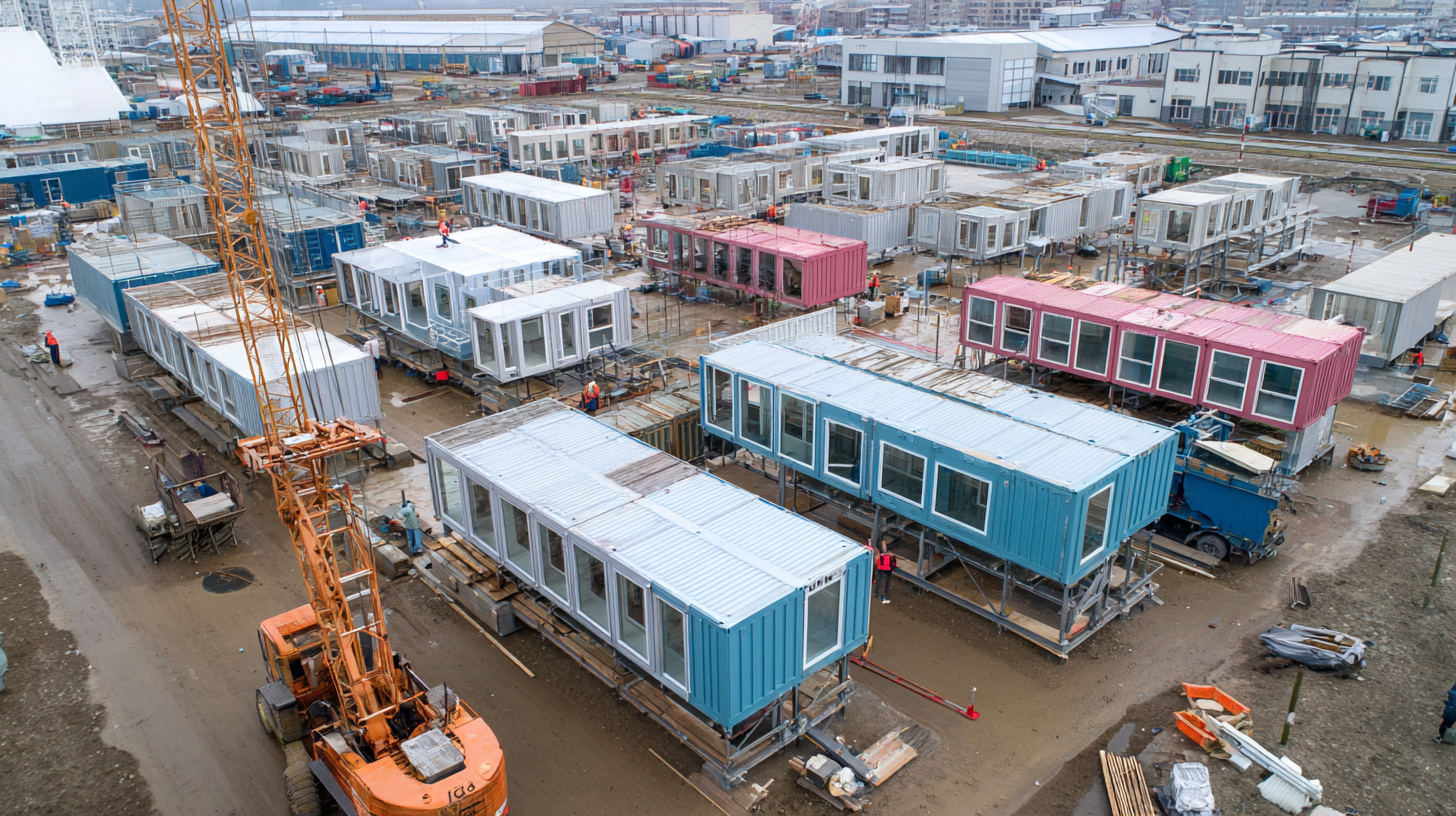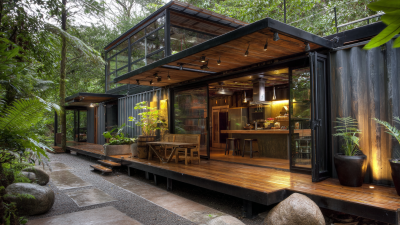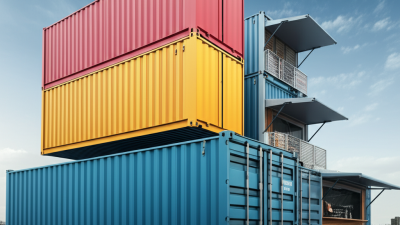Top 10 Tips for Choosing Modular Container Buildings for Your Next Project
In the evolving landscape of construction, modular container buildings have emerged as a versatile and efficient solution for a variety of projects. According to renowned architect and sustainability expert, Jane Doe, "Modular container buildings not only provide architects and builders with a sustainable alternative but also encourage innovative design and rapid construction." With their ability to be repurposed and customized, these structures are increasingly being embraced across various sectors, from residential developments to commercial spaces.

When considering modular container buildings for your next project, it's essential to navigate the myriad of options available. From understanding design possibilities to evaluating cost-effectiveness, making informed decisions can drastically impact the outcome of your project. This guide will delve into the top 10 tips for choosing the right modular container building, ensuring you harness their full potential while aligning with your project's goals. With strategic planning and insight, your use of modular container buildings can lead to not only stunning architectural creations but also substantial time and resource savings.
Understanding Your Project Needs Before Selecting Modular Container Buildings
When embarking on a modular container building project, it's essential to first understand your specific project needs. A comprehensive assessment of these needs can significantly streamline the decision-making process and ensure optimal results. According to industry reports, 90% of project failures arise from misaligned expectations and poorly defined goals at the outset. This is particularly relevant in the modular construction sector, where flexibility and adaptability to different requirements are paramount.
Furthermore, recent studies indicate that over 70% of clients in the construction industry prioritize customizable design options and scalability. Modular container buildings can offer significant advantages in these areas, allowing for rapid deployment and modification to suit evolving project dynamics. As emphasized in the market analysis of modular systems, being aware of these capabilities ensures that project managers can leverage the full potential of modular solutions effectively. Neglecting to align these factors with your project's unique context may lead to inefficiencies and increased costs down the line.

Evaluating Site Conditions for Optimal Container Placement and Design
When considering modular container buildings for your next project, it’s crucial to start with a thorough evaluation of site conditions. This involves understanding the horizontal and vertical extent of potential contaminations, such as petroleum hydrocarbons in the soil and groundwater. A proper site assessment can help determine the optimal placement for your containers, ensuring they are situated in a safe environment free from hazardous materials.
Additionally, keeping in mind the storage and disposal requirements for potentially hazardous materials, such as radioactive waste, is essential. The design and layout of your modular buildings should allow for adequate safety measures to prevent any radiation exposure or pollution, ensuring compliance with environmental regulations.
In your selection process, consider these tips: First, assess the topography and soil conditions to determine suitable locations that will support the containers effectively. Second, analyze potential environmental impacts, ensuring that the chosen site is free from contamination that could hinder the project. Lastly, plan for accessibility and infrastructure needs to facilitate construction and future use. By prioritizing a comprehensive evaluation of site conditions, you can optimize the design and functionality of your modular container building project.
Key Features to Look for in High-Quality Modular Containers
When selecting high-quality modular container buildings for your next project, it’s crucial to focus on key features that ensure durability, functionality, and comfort. First, ensure that the containers are constructed using robust materials that can withstand environmental stressors such as wind, rain, and extreme temperatures. Look for options that have been treated for corrosion resistance and equipped with insulation to maintain a stable interior climate. This will not only enhance the longevity of the building but also improve energy efficiency, reducing operational costs in the long run.
Another important consideration is the modular design's flexibility and customization options. High-quality modular containers should offer various configurations and layouts to meet your specific needs. Consider the availability of features such as windows, doors, and interior finishes that can enhance the overall aesthetic and functionality of the space. Additionally, assess the light and ventilation options, as these elements are essential for creating a comfortable living or working environment. By prioritizing these key features, you can ensure that your modular container building is both practical and inviting, tailored to suit your project requirements.
Sustainability Considerations When Choosing Container Buildings
When considering the sustainability aspects of modular container buildings, it's essential to evaluate the materials utilized in their construction. Polymer concrete, which includes variants such as polymer-impregnated concrete, polymer-cement concrete, and polymer-resin concrete, stands out due to its durability and reduced environmental impact. These materials not only enhance the structural integrity of container buildings but also contribute to energy efficiency, as they can help regulate temperature and minimize energy consumption.

Moreover, applications of polymer concrete extend beyond the framework of the buildings. Its versatility allows for use in flooring systems, container blocks, and pump foundations, which are crucial for waste management solutions. By selecting container buildings that employ polymer concrete technology, project managers can ensure that they are making environmentally responsible choices while also benefiting from innovative construction practices that support long-term sustainability goals. This integration not only addresses ecological concerns but also aligns with the growing industry trends towards green building initiatives.
Budgeting and Cost Management for Your Modular Container Project
When embarking on a modular container building project, careful budgeting and cost management are crucial for ensuring that your investment meets both functional and financial expectations. Start by conducting a thorough analysis of your project’s requirements, including the needed space, layout, utilities, and any specialized features. This will help in creating a realistic budget that encompasses all aspects of the project, from design to installation. Additionally, researching various modular container options will aid in identifying the most cost-effective solutions that still meet your quality standards.
Another important factor is to consider hidden costs that may arise during the project. These could include site preparation, transportation, and permits, which can significantly impact your overall budget. Developing a contingency plan, allocating funds for unforeseen expenses, and engaging with reputable suppliers can provide added financial security. Regularly reviewing your budget against actual expenses throughout the project will help in maintaining control, allowing for timely adjustments to avoid going over budget. By prioritizing comprehensive cost management from the beginning, you will be better positioned to achieve a successful modular container project without financial strain.
Related Posts
-

Innovative Uses of Construction Containers in Sustainable Urban Development
-

Innovative Design Ideas for Sustainable Living with Freight Container Homes
-

Exploring the Future of Sustainable Living with Innovative Shipping Container Fabrication
-

Revolutionizing Modern Architecture: The Rise of Cargo Container Construction in Sustainable Living
-

Exploring the Versatility of Custom Cargo Containers: Innovative Uses for Modern Transport Needs
-

Innovative Cargo Container Buildings Transforming Urban Living Spaces

